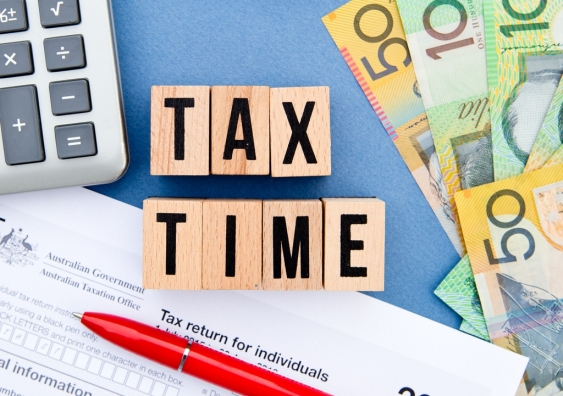Tips on how to get tax fit prior to filing your tax return
A ∫⁄¡œÕ¯¥Û ¬º« tax expert shares practical tips on claims you can make in your tax return if you‚Äôve worked from home during the pandemic.
A ∫⁄¡œÕ¯¥Û ¬º« tax expert shares practical tips on claims you can make in your tax return if you‚Äôve worked from home during the pandemic.

A fitness regime during the current period of self-isolation has never been more important¬Ýto protect our immune system and mental health.
But getting 'tax fit' to support our financial well-being during COVID-19 is just as relevant, says Professor of Practice Jennie Granger from¬Ý∫⁄¡œÕ¯¥Û ¬º« Business School.
With a significant portion of professionals now working from home, this has led to wider tax implications for individuals as the line between what is deductible and what isn’t, becomes blurred.
"To make the most of the support packages the government has put together in response to COVID-19, you can claim the running costs related to working from home. But this only applies to expenses that have not been reimbursed by your employer,” Professor Granger says.
“You must also ensure to keep records and related receipts proving your expenditure.”
How much paperwork is required will depend on which of the following three methods of claim you are entitled to use.Ã˝
“For any of the methods, you must record what hours you’ve worked for at least a four-week period to establish your pattern. This can be in the form of a timesheet, a diary or your online calendar for example.
“If your work hours are varied and involves a lot of shifts, you should keep a complete record to make sure you maximise your claim.”
The Australian Tax Office (ATO) has introduced a straight-forward shortcut in recognition of the numbers of people working from home during the period: 1 March to 30 June 2020.Ã˝ Using this shortcut, you can claim 80 cents per hour for all relevant running expenses incurred when working from home.
“The only record-keeping you have to do is to maintain a logbook with your work hours for at least four weeks to establish your pattern,” Professor Granger says.
This method is the easiest and probably the most generous ‚Äì at least in households where there is more than one of you working from home.Ã˝
“This is because each of you can claim the full 80 cent-rate for your respective hours work. It is simple to use because it is an all-in rate that covers all expenditure such as household running costs, office equipment you buy such as an ergonomic chair, and ongoing expenses such as ink cartridge. If you use alternative methods you will need to divvy up shared expenses such as electricity bills into private and each person’s work proportion,” she says.
Professor Granger also advises to add the note¬Ý'COVID-hourly rate' next to your claim for home office expenses when preparing your tax return or lodging through a tax agent.
“By being more transparent, you will be less likely to raise eyebrows when the ATO computers analyse your claim.”
She also recommends keeping receipts of new equipment that you bought to help you work from home.Ã˝
“Even if you don’t need them to prove your claim this year under the 80-cent rate, if you work from home in the future you may need the receipts to make a claim.”
The 52-cent rate is ATO‚Äôs ongoing short cut method. But it doesn‚Äôt apply to all expenses.Ã˝
“The advantage is that the 52 cents per hour replaces calculating and itemising all your running costs such as the proportion of electricity (lighting, cooling/heating), depreciation of home office furniture and equipment, and consumables such as stationery and toner cartridge,” Professor Granger says.
While this can be a big-time saver, you will still need to calculate the work portion and claim your internet and phone expenses separately. You must also be able to demonstrate on a reasonable basis what is related to your work.
“This method will be more beneficial if you think your work internet and phone expenses will be high enough to be a bigger claim than under the 80-cent rate method. The 52-cent rate will more likely suit those who work from the couch or kitchen table and don’t need or have room for a dedicated home office,” she says.
“For internet usage and phone calls, the easiest method is to log your work calls and internet usage for four weeks to establish your pattern of work expenditure. You can then extrapolate on this basis for the rest of the year. If you don’t have a predictable pattern, you will need to dissect all your phone bills and log your internet usage.”
This method requires the most work but could be the most worthwhile for those who have a dedicated home office that is used for work.
“To benefit from this method, you will need to measure your home office in square metres (and your home if you don’t already know it) so you can calculate your claim of the proportion of your house expenses such as lighting and heating,” Professor Granger says.
“You can also progressively write off the cost of equipment, furniture and furnishings that cost more than $300. But you will need to work out the depreciation (you can use the ) and calculate the work proportion you can claim.
"You can claim consumables such as stationery and ink cartridges outright. For phone and internet expenses, you can either use the actual expenditure method or the four-week shortcut method in example 2.”

Professor of Practice Jennie Granger, School of Taxation and Business Law, ∫⁄¡œÕ¯¥Û ¬º« Business School
One of Professor Granger’s tips is to download the ATO’s myDeductions app and scan your invoices and receipts as you purchase items for your home office. You can then simply upload them into myTax if you do your own tax return or email them to your tax adviser.
For more information on what may apply in your circumstance the ATO has published a guide called .Ã˝
For some of us, our workplace has stayed open but has changed considerably.
If as a result of the pandemic, you had to buy tools or equipment to support your changed role or you are incurring new expenses such as fuel costs due to an increase in deliveries (if you work in retail or hospitality) ‚Äì you may be able to claim them in your tax return this year.Ã˝
But it is best to check the ATO occupation and industry specific guides or consult a tax agent to ensure you are eligible. One thing to keep in mind is that you cannot claim expenses that have already been reimbursed by your employer.
Normally, such items would be classified as private expenditure unless provided by employers in industries where protective gear is required. But the ATO has recognised the need for protection against COVID-19 – especially for individuals who are required to work in close proximity with other people.
“With COVID-19 being highly contagious and its associated risks to health, you can now claim such expenses as ‘necessary protective items’ on your tax return if you’ve worked closely with other people,” Professor Granger says.
“But they must be your expenses and not reimbursed by your employer. They must also be bought to be used at work to protect yourself against the risk of catching the coronavirus.”
If the risk is a remote possibility (for example if you are isolated at home) then it will be classified as a private expenditure. To be eligible, this item must be widely acceptable to protect an individual against the risk of contracting the coronavirus in work-related circumstances.
“A practical tip is to buy separate hand sanitizers for work, so you don’t have to work out how much is the work use on such small items. Also, don’t forget receipts can fade quickly so use the myDeductions app or take photos of your receipts as you purchase,” Professor Granger says.
An interesting question is whether the coronavirus has created special circumstances in which expenses for travelling from home to work can now be claimed.
“Whilst travel between home and work is usually private by nature and not deductible, you may be able to argue that ‘home’ is now your base of employment if your workplace has essentially shut down and you are required to work from home but have to make the occasional trip into work.
‚ÄúFor example, if you need to go to the office to collect information or ¬Ýhandle confidential data, you could argue that the office has become your secondary place of work and that you can¬Ý therefore claim back your travel expenses between home and the office,‚Äù Professor Granger says.
When assessing this question, it is important to establish if such trips into the workplace are considered necessary and reasonable work expenses. As the ATO has not yet given guidance on this, for clarity it is advisable to discuss this with your tax adviser and keep an eye out for .
For the vast majority of personal taxpayers, filing their tax return will result in a refund.Ã˝
‚ÄúMy colleague Dr Ann Kayis-Kumar who is also the¬ÝFounding Director of ∫⁄¡œÕ¯¥Û ¬º« Tax Clinic, said that the ATO is very supportive when people contact them to get back on track.‚Äù

Senior Lecturer and Tax Clinic Director Ann Kayis-Kumar, School of Taxation & Business Law, ∫⁄¡œÕ¯¥Û ¬º« Business School.
So, being at home now is an opportunity to file your returns if you are behind.
For some people however, lodging a tax return could result in a bill.
“If you are in this situation, please discuss this with the ATO as soon as possible. The ATO charges interest on tax debt, so it’s really best to get in as soon as you can. The ATO can arrange for a payment plan so you won’t have to pay off a huge sum of money in one go,” Professor Granger says.
Dr Kayis-Kumar has also advised that individuals experiencing financial hardship could be eligible for a tax agent through a free tax clinic such as . There are currently ten free, independent and confidential tax clinics across Australia.
The ∫⁄¡œÕ¯¥Û ¬º« Tax Clinic is open all year-round and is currently accepting telephone appointments. If you have been significantly affected by COVID-19 and need tax advice but cannot afford it, please contact ∫⁄¡œÕ¯¥Û ¬º« Tax Clinic on 02 9385 8041 or by . ¬Ý